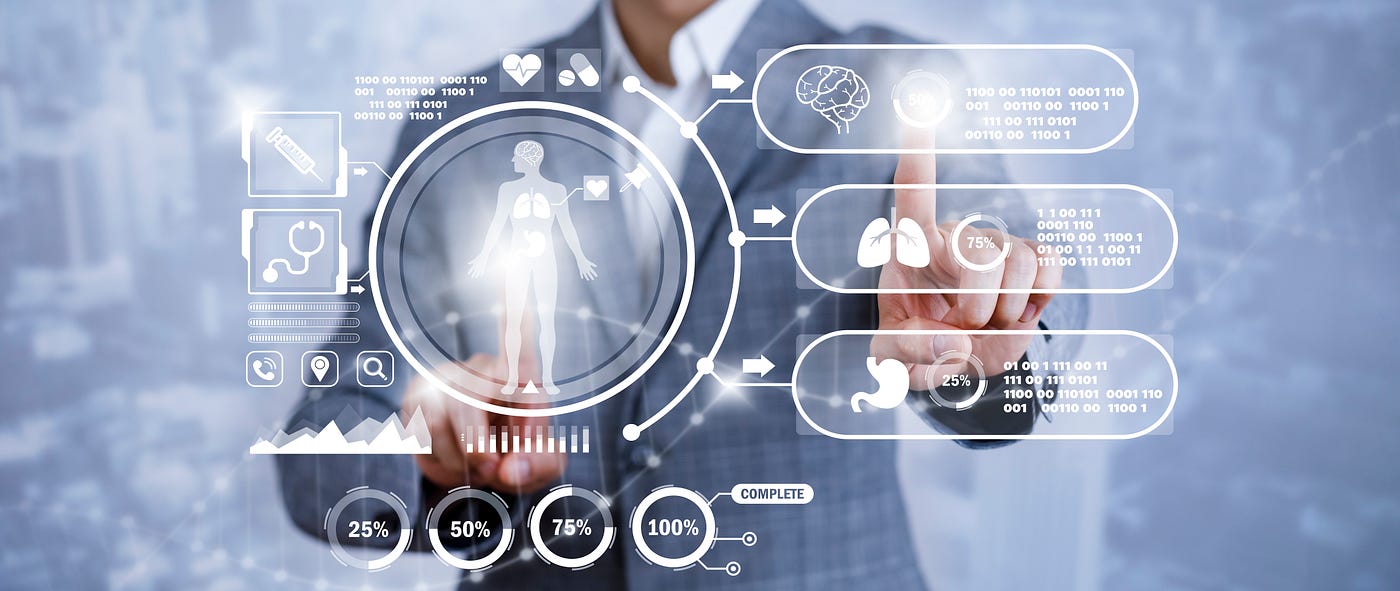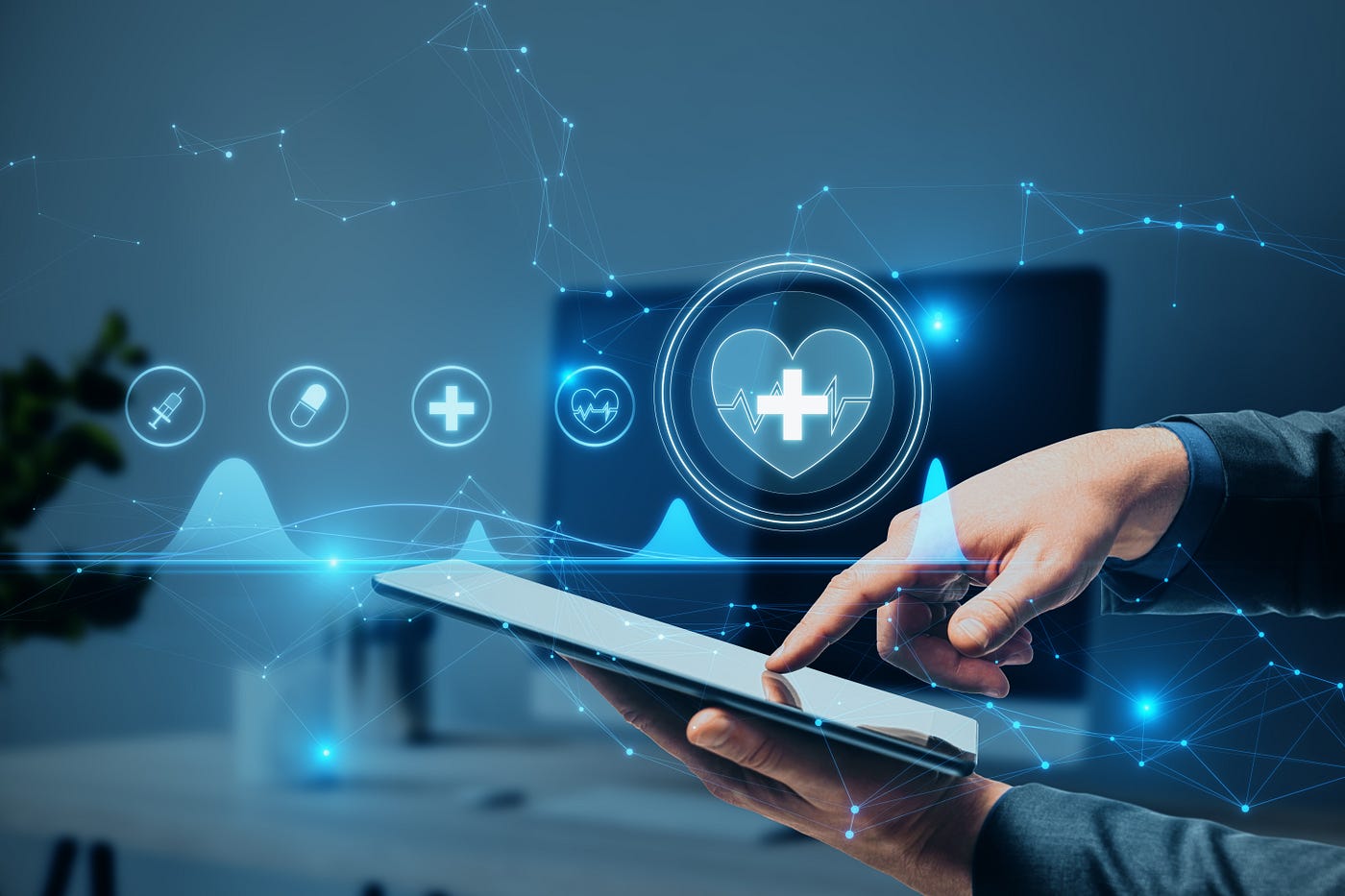Full Lifecycle Health Management: The Rise of Digital Self-Care

In the realm of sustainable practices, the concept of full lifecycle management has long been applied to products and energy carriers. This approach involves considering every stage of their existence, from extraction to disposal, to assess environmental impact and optimize cost-effectiveness. Drawing inspiration from this, we can extend the principles of full lifecycle management to human health. By adopting a comprehensive approach that encompasses prevention, early intervention, ongoing monitoring, and holistic well-being, digital self-care technologies are emerging as a cost-effective, fine and customized service alternative to optimize health outcomes and improve the quality of life at low cost.
Understanding the Concept of Full Health Lifecycle Management
As early as 1931, the concept of product life cycles and the need to manage them emerged. In 1957, an employee of Booz Allen Hamilton proposed a five-step life cycle model, starting with introduction, followed by growth, maturity, saturation, and decline. This comprehensive framework enabled businesses to strategically manage products throughout their lifecycle, optimizing performance and minimizing waste. It emphasized the importance of considering each stage’s impact on the overall outcome.
In 1985, American Motors Corporation (AMC) sought to improve its product development process to compete against larger competitors. By emphasizing the product lifecycle and introducing the compact Jeep Cherokee, AMC revolutionized the SUV market. This success led to the development of the iconic Jeep Grand Cherokee.
Effective product lifecycle management (PLM) offers various advantages, such as faster time-to-market, higher product quality, improved product safety, increased sales opportunities, and reduced errors and waste. Specialized computer software supports PLM through functions like document management, design integration, and process management.
Full Lifecycle Management of Human Health
As a result of gerontological research, including a study conducted on 1,700 men and women, we have gained insights into the periods of highest risk for developing diseases and the role of preventive medical assistance in detecting these conditions. The study identified three critical age periods: 15–29, 40–49, and 60–69 years.
- During the 15–29 age period, individuals faced significant psychosocial pressures, which could lead to immune deficiency and subsequent development of diseases requiring surgical treatment.
- The 40–49 age period was characterized by the prolonged effects of both internal and external factors.
- In the 60–69 age period, both men and women underwent a sharp increase in surgical interventions.
The main share of diseases detected during preventive examinations occurred in the age group of 40–49 years irrespective of gender (45% in men and 36.1% in women). Almost all diseases of different classes were shown to be detected at initial stages in people under 50 years of age, while in patients aged over 50 quite significant changes were diagnosed.
Early-Stage Interventions
Youth is the most formative period of life, and for more than half of adults with mental health disorders, first onset occurs during or before adolescence. Most young people in high-income countries have access to the internet and mobile technologies.
Anxiety and depression are among the top five causes of ill health burden among youth population (age 15–29 years). The reasons for the high levels of unmet clinical need in adolescent depression and anxiety are complex. However, one way of improving access to evidence-based resources and interventions is via digital mental health technologies. These technologies include resources and interventions that are delivered via devices such as computers, tablets or smartphones to support and improve mental health. Indeed, digital mental health has been identified as a key area of future clinical practice, in particular for preventing and treating adolescent depression and anxiety.
The link between chronic illness and depression is complex. Many long-term illnesses can increase the risk for developing mental health difficulties, but the reverse is also true: people with depression are more likely to develop certain physical chronic illnesses.
Mid-life Interventions
Multimorbidity has emerged as one of the greatest challenges facing health services, both presently and in the coming decades. Its proportion increases considerably with age, resulting in an S-shaped curve. While its prevalence among young people (18–29 years old) is typically lower than 10%, more than a quarter (27.7%, 95% CI 25.7%–29.7%) of scientific research participants between 40 and 49 years of age have been found to be multimorbid.
Multimorbidity refers to having multiple chronic conditions at the same time, and it poses a significant challenge for healthcare systems. Individuals with multimorbidity require more extensive and costly long-term medical care compared to those with no or just one chronic condition. Additionally, multimorbidity negatively affects both physical and cognitive abilities, reduces quality of life, and is associated with a higher risk of mortality.
Self-management, which encompasses the actions taken by individuals to handle their symptoms, lifestyle, and emotions, has the potential to bridge the gap between patients’ needs and the capabilities of healthcare systems. It not only enhances their overall quality of life but also provides a lifelong support mechanism. However, self-management becomes notably more challenging for individuals with multimorbidity compared to those managing a single condition. Apart from monitoring and managing multiple symptoms, individuals with multimorbidity also face the complexities of juggling multiple medications and adapting their lifestyle behaviors. They often encounter barriers such as fragmented care, insufficient knowledge for self-management, conflicting advice, and inadequate communication with healthcare professionals.
Advanced-life Interventions
Ageing can result in additional complexities, such as reduced mobility, frailty, cognitive declines and comorbidities such as pain and depression.

Digital home-based self-management systems, utilizing information and communication technologies and sensing technologies, have emerged as promising tools to monitor and support individuals in their daily lives regarding their health and well-being within the comfort of their homes. These systems have the potential to facilitate self-management by increasing individuals’ awareness of their health and well-being, motivating behavioral changes such as adopting healthy eating habits and engaging in regular exercise, and alerting them to potential health issues that may require medical attention.
Conclusions
In modern society, people pay more attention to their healthcare.
For individuals with chronic illnesses, the physical challenges associated with attending medical appointments can be significant, especially when fatigue, pain, or mobility issues are present. Such difficulties can further contribute to the already existing stress of managing their condition, potentially affecting their mental health.
Conversely, individuals experiencing depression may encounter obstacles in keeping up with medical appointments or seeking help when experiencing symptoms. As a result, healthcare providers may not identify the early signs of additional conditions in a timely manner, allowing them to progress into chronic states.
The ambition for more integrated care has been central to strategies to address the challenges presented by multimorbidity. Yet as research has and is uncovering, this is far from sufficient to address the complex issues raised by the rising number of people with multiple conditions.
Just as with PLM, specialized computer software is becoming available to support your personal health management. With the advent of Artificial Intelligence methodologies, digital self-care technologies are emerging as a way towards smart healthcare by extending the reach and increasing people’s access to therapies at a relatively low cost.
Digital self-care technologies offer various opportunities for patients and their caregivers, including providing access to health and contextual information to promote reflection, suggesting personalized care activities or treatment adjustments, enabling the involvement of informal caregivers in care activities, fostering collaboration with the healthcare team, and facilitating knowledge sharing and learning among individuals with the same chronic condition.
Such technologies have been highlighted as particularly valuable given their potential to improve reach and to ease access to psychotherapy, at a relatively low cost, as there is growing evidence to support their use in preventing and treating adolescent anxiety and depression. As an example, the UK National Institute for Health and Care Excellent (NICE) guidelines for the identification and management of depression in children and young people recommend digital CBT in the management of mild depression.
By recognizing the parallels between product life cycles and human health management, we can appreciate the value of adopting a full lifecycle approach in healthcare.
We are dedicated to integrating the principles of lifestyle medicine with cutting-edge technology to develop digital wellness solutions, such as the myAVOS app. By combining science-backed methods and advanced algorithms, OptiChroniX aims to provide users with personalized insights and recommendations to maintain and enhance cognitive function.
Let’s embrace full lifecycle management in healthcare, incorporating evidence-based personalized health applications, modern data management, artificial intelligence, and remote diagnosis. By doing so, we embark on a path of comprehensive health management that brings about improved quality, efficiency, and sustainability for individuals and the healthcare system as a whole.
If you’re between the ages of 40 and 65, now is the perfect time to focus on prevention and take control of your health! By using a digital health coach app like myAVOS, you can get personalized coaching and guidance on how to live a healthy and fulfilling life. So what are you waiting for?
Download myAVOS from the AppStore today and start your journey to better health and well-being!
A short impression of the capabilities of myAVOS can be seen here on our youTube channel.
Credits: Meet Albrecht Tribukait PhD, MBA, a transformational leader with over 20 years of international experience at the intersection of science, policy, and regulation in Biotech and FMCG industries. With extensive expertise in national and supranational regulation of consumer and non-food products, Albrecht has published scientific and clinical research and established groundbreaking partnerships with NGOs and government research organizations. Holding a Ph.D. in Natural Sciences and an MBA from Anaheim University Akio Morita School of Business, Albrecht also holds postgraduate certificates from Oxford and Hull.


Comments
Post a Comment